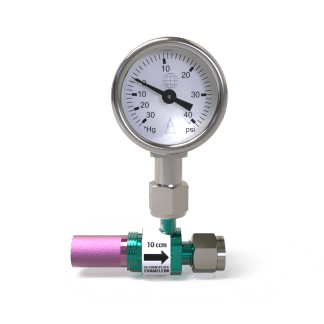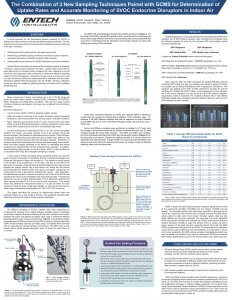Air sampling canisters have repeatedly demonstrated their superior performance over thermal desorption tubes and Tedlar bags as having the lowest and most reliable levels of any air monitoring technique.
Vapor Intrusion Monitoring
Overview
Air sampling canisters have repeatedly demonstrated their superior performance over thermal desorption tubes and Tedlar® bags as having the lowest and most reliable blank levels of any air monitoring technique. This has become even more important as the latest guidelines for vapor intrusion assessment require that several volatile chemicals be monitored down to low-part-per-trillion levels. In order to successfully monitor these analytes at such low levels, it has been necessary to advance the technology required to insure the necessary cleanliness of samplers, canisters, and laboratory analyzers. All materials exposed to the sample must undergo a critical examination to make certain they are “chromatographic grade” or otherwise demonstrate minimal or no adsorption, absorption, or reactivity toward the target analytes.
For the past 25 years, Entech has focused on the successful collection, storage, and transfer of gas-phase polar and non-polar volatile chemicals with minimal loss and contamination. We have applied this experience to develop the most advanced and reliable solution available for vapor intrusion monitoring, both in indoor air and in sub-slab soil gas. Sampler internal volume and surface area has been minimized to decrease residence time, creating the lowest potential for contamination currently available. Two separate implementations of canister monitoring for vapor intrusion are discussed below.
Indoor Air
Vapor intrusion analysis for indoor air requires extremely low detection limits – often to 2–5 parts-per-trillion. Not only must active sites, absorptive surfaces, and dead volume be eliminated, but extreme care must be taken to isolate the sampler and canister from contamination during transfer to the field. In fact, all four phases of the monitoring process shown in the diagram below are important for maintaining low blank levels and accurate results: (1) Inertness Validation, (2) Laboratory Cleaning and Isolation, (3) Field Sampling, and (4) Laboratory Analysis. As the only company that manufactures solutions for each step of this application using canisters, Entech is uniquely positioned to understand and provide a complete and validated solution.
The CS1200E sampler shown on pages 62–63, features 24hr time-integrated sampling into a 1.4L Silonite® MiniCanTM, or up to two week sampling into a 6L Silonite® canister. The internal surface of the CS1200ES is Silonite® coated which provides inertness similar to a GC column to virtually eliminate losses and carryover. The CS1200E(S) can be cleaned just like canisters in the laboratory, then completely isolated during shipping to avoid contamination. Contact Entech, or your authorized Entech Distributor for application literature (App. Notes 902 and 2014-05) that detail successful recovery of part-per-trillion level TO-15 compounds without sample loss or contamination using the CS1200E(S) with Silonite® canisters.
Sub-Slab Vapor Intrusion
Sub-slab vapor monitoring has produced questionable data in the past due to leakage around the grouted probe and contamination during transfer to the sample collection system. Entech’s sub-slab inlet prevents contamination from indoor air by creating a vapor-tight seal at the slab surface using our exclusive “triple seal”, all without the use of any messy grout. The Entech sampler’s internal volume is minimized and all wetted surfaces feature a Silonite “chromatographic grade” coating. The sample train is cleaned just like a canister; using a series of fill/evacuation cycles. After cleaning, the sampler is isolated until connection to the probe is required in the field. A high quality gauge on the sampler verifies the sample train has maintained a vacuum prior to opening in the field, insuring a contaminant-free connection. To eliminate the 1-2cc of indoor air “in” the probe itself, a pre-flush canister is attached for a few minutes after connecting the sampler to the probe. Other sample trains that rely solely upon a pre-flush procedure may still allow contaminants to outgas from the sampler itself, ultimately providing unreliable results for monitoring VOCs at very low levels.



